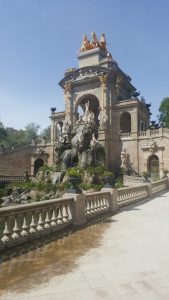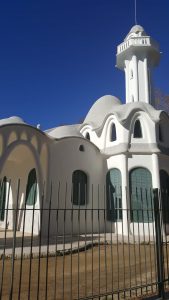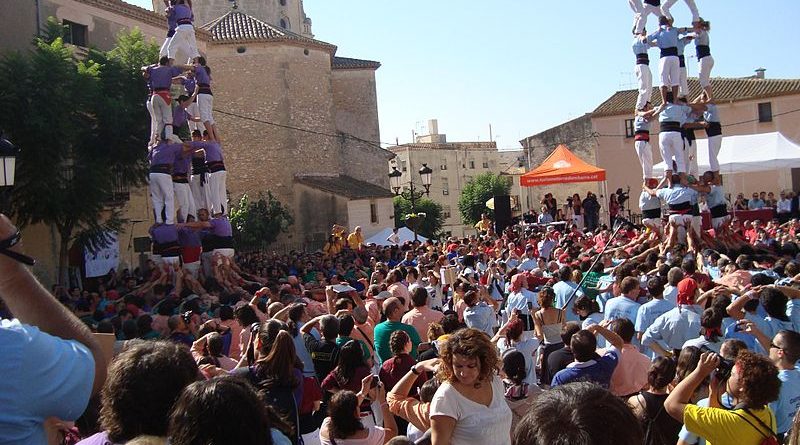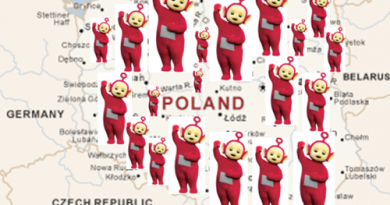Local and regional culture in Spain (LingoMap)
Local and regional culture in Spain
Hola a todos, ¿cómo estáis? ¿Bien? Cooooool.
So, today’s blog post is about the culture and characteristics of Spain. However, I live in Catalunya, whose culture is very different from the other traditions in Spain.
- Languages
In Catalunya (which includes Barcelona) everyone speaks Catalan and Spanish. It’s a deep-seated part of Catalan culture and if you want to try and fit in with the locals, feel free to use some of these phrases:

Bon dia- Good day/Hello
Com estas?– How are you?
Be, gracies, I tu?- Good thanks, and you?
Adeu- Goodbye
Si us plau? (pronounced sis plaw)- Please
Moltes gracies- Thanks very much
Parles angles?- Do you speak English?
Com es diu…en Catala? –How do you say… in Catalan?
Catalan has existed since before Spain was created. It is a language as old as Spanish which was banned during the Franco dictatorship. The flag and the Catalan traditions and ways of life were until after Franco died in 1975. There were people at my workplace who were very young at the time but remember being able to only speak Catalan at home. Now, school lessons are taught in Catalan.
- Food and drink
Catalan food and drink is very different from the ‘typical’ Spanish food. They pride themselves in their traditional cuisine.
Catalan people are known for mixing sweet and savoury things together. It was seen as a way to preserve the Catalan culture. Now it’s just a celebration of it.
- Fideua: Think of Paella. Instead of rice, though, fideua is made with vermicelli and condiments like prawns (gambes in Catalan) and chicken (pollastre).
- Crème Catalana: The Catalan version of crème Brulée. Thick and creamy goodness.
- It’s like lasagne without the layers in between. It’s covered with cheese at the top. I love it.
- Pa amb tomaquet: This is essentially bread and tomato with olive oil, but it’s present at most meals at home, and bread and oil is present even at school mealtimes.
- Cava: An extremely famous wine that originates from Catalunya.
- Coca: The Catalan version of pizza. However, as Catalunya is known for its sweet and savoury combinations, coca can be both. It can be covered with sugar nuts and chocolate, or covered with tomato, onions and peppers.
- Embotits: Extremely popular Catalan sausages.

- Architecture
One of Barcelona’s most popular artists is Antoní Gaudí, but the art in Catalunya is really in its architecture. It shows its fight for independence from Spain. Catalunya embraces modernisme, because it was and still is seen as an expression of their desire for independence.
Catalunya has produced a lot of well-known architecture and art. Some of the most famous Catalan architecture by Gaudí is Parc Guell and La Sagrada Familia in Barcelona. More famous architecture includes the Arc de Triomf. When I lived in Terrassa, on my way to work, I passed a well-known building called La Masia Freixa. The others in Terrassa include the Cartoixa Castle.
- Cultural celebrations
A big celebration in Barcelona is Sant Jordi. Sant Jordi is the 23rd of April. Students in Terrassa go on a school trip to the theatre to listen to Poetry. There are also the famous human towers known as Castells in Catalan.
When I was teaching in Terrassa, my school celebrated Día de Maria Auxiliadora, who was the patron saint of the School. Every year on the 24th of May, the entire school walk up to the mountain and spend the whole day there.
- Human towers
The castells represent the community spirit of the Catalan people; the BBC have a great video.
In fact, UNESCO has classified the Castells as Masterpieces of the Oral and Intangible Heritage of Humanity.
La cultura general de España
He hablado mucho de la región de Catalunya, pero hay cosas más generales que pertenecen a España.
- La Siesta
La siesta es una tradición en España. Entre las 12 y las 14, las tiendas cierran. Aún en los colegios, la mayoría de los estudiantes regresan a la casa para comer, dormir y recuperarse para las clases de la tarde, que empiezan a las 15.
- Nochevieja, Nochebuena y los Reyes
La Nochebuena es el 24 de diciembre. Esa noche viene Papá Noel con los regalos.
En España (y los otros países hispánicos), Nochevieja es el 31 de diciembre. Una tradición popular es las uvas de la suerte. Se dice que, si se comen las uva con las campanadas de antes de medianoche, habrá suerte durante el año.
La celebración de los Reyes empieza el 5 de enero. La gente ve La Cabalgata de los Reyes Magos (un desfile) en la calle. El 6 de enero, todo el mundo abre los regalos y se comen Roscos de Reyes. El Roscón de Reyes es una tarta circular, como una corona.
- La Semana Santa
En España, Semana Santa es muy importante. Hay procesiones en las calles, con personas que llevan la ropa blanca y los sombreros altos y puntiagudos. Los catalanes comen mucho chocolate y pican xuixos y panellets.
- El toreo
El toreo era un deporte sangriento y muy español que ha sido prohibido en muchas partes de España. De hecho, Catalunya fue el primer estado en prohibirlo. “Los toros” son polémicos porque hay abuso animal. También hay un riesgo que de que puedan morir los “matadores”.
La prueba de la independencia
Otra cosa que parece ser una característica de Cataluña eslas manifestaciones. Muchos catalanes quieren independizarse de España. En Cataluña, la gente está muy orgullosa de ser catalana. Muchos cuelgan las Banderas de los balcones y ventanas, cantan el himno catalán y se manifiestan frecuentemente. Una canción muy popular actualmente es Fins que arribi l’alba por el grupo Els Catarres. Esta canción ha estado en la tele y a los jóvenes les gusta mucho.
Como se puede ver, España es un país con mucha cultura. Pero, no me creas, ¡ve a España a verlo con tus propios ojos!


